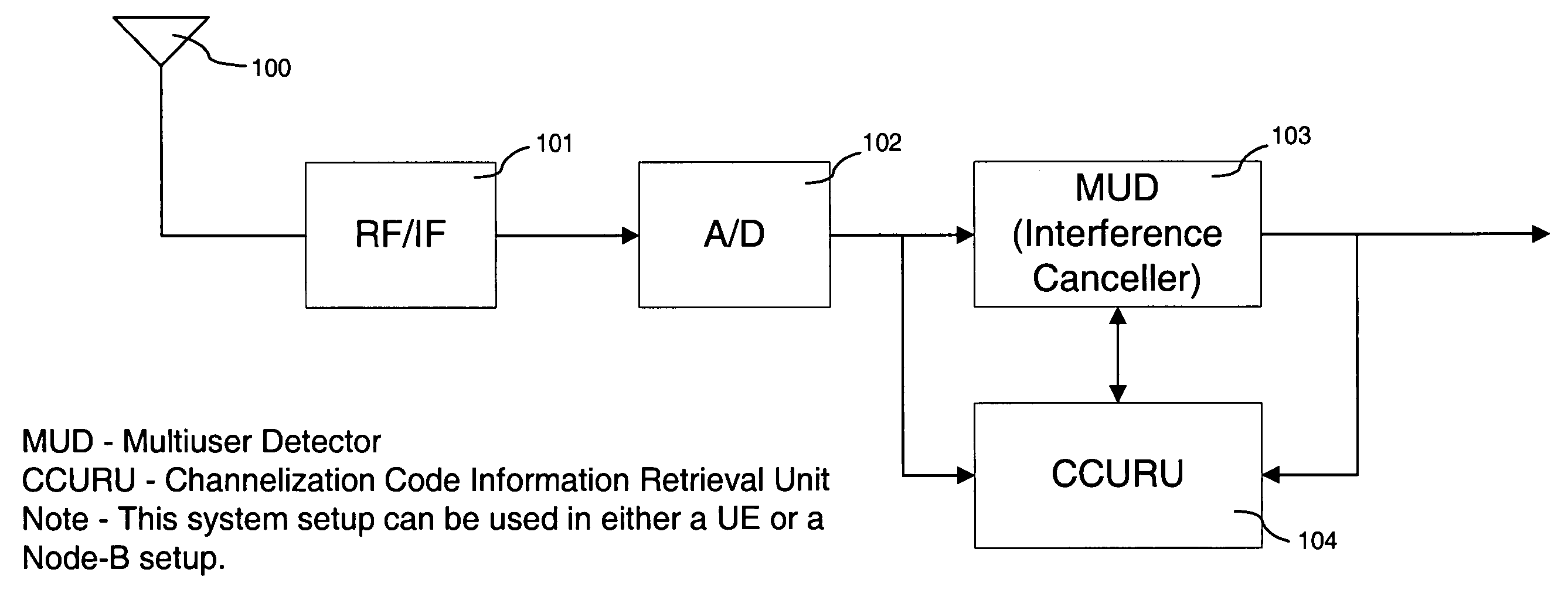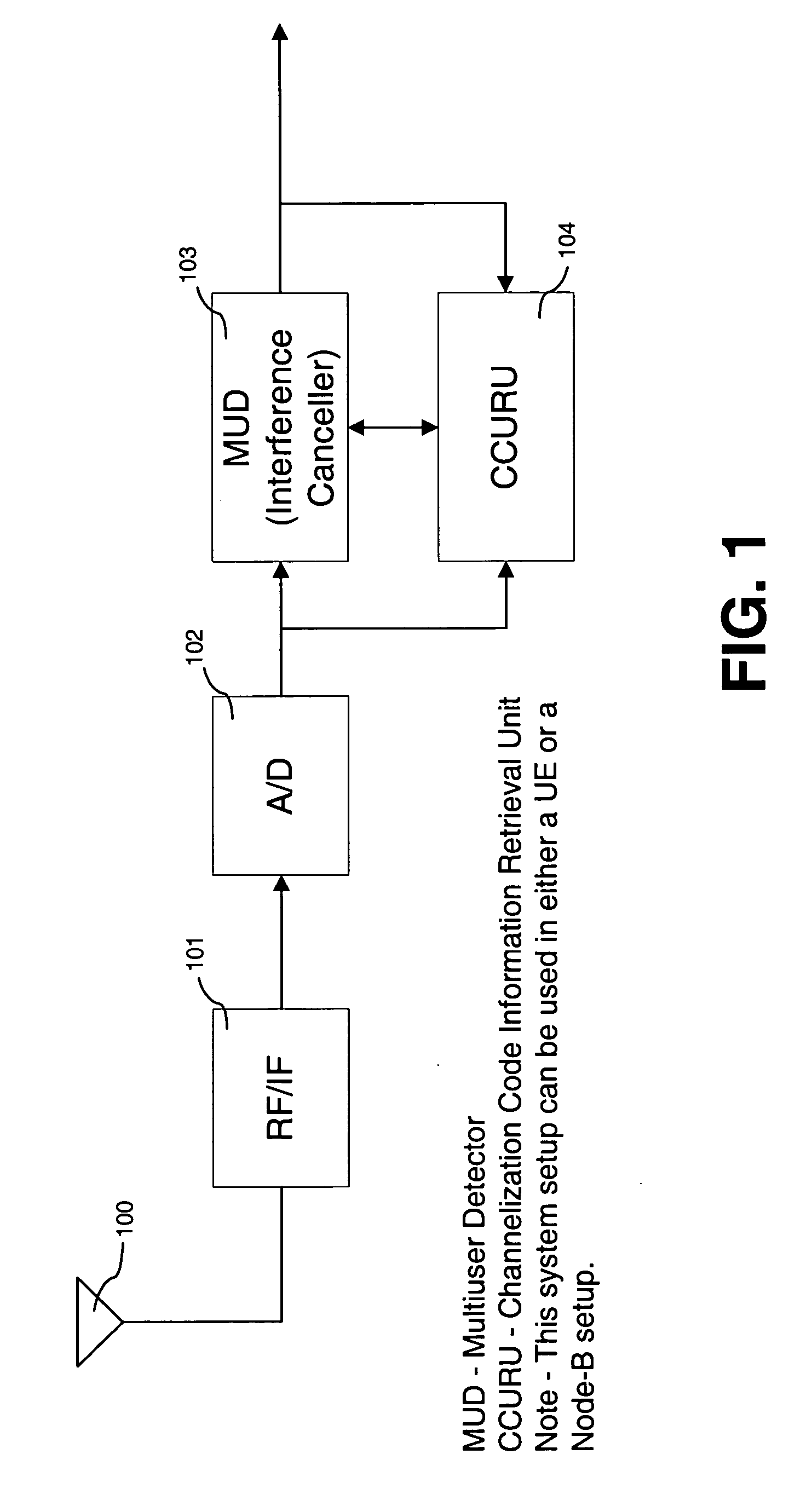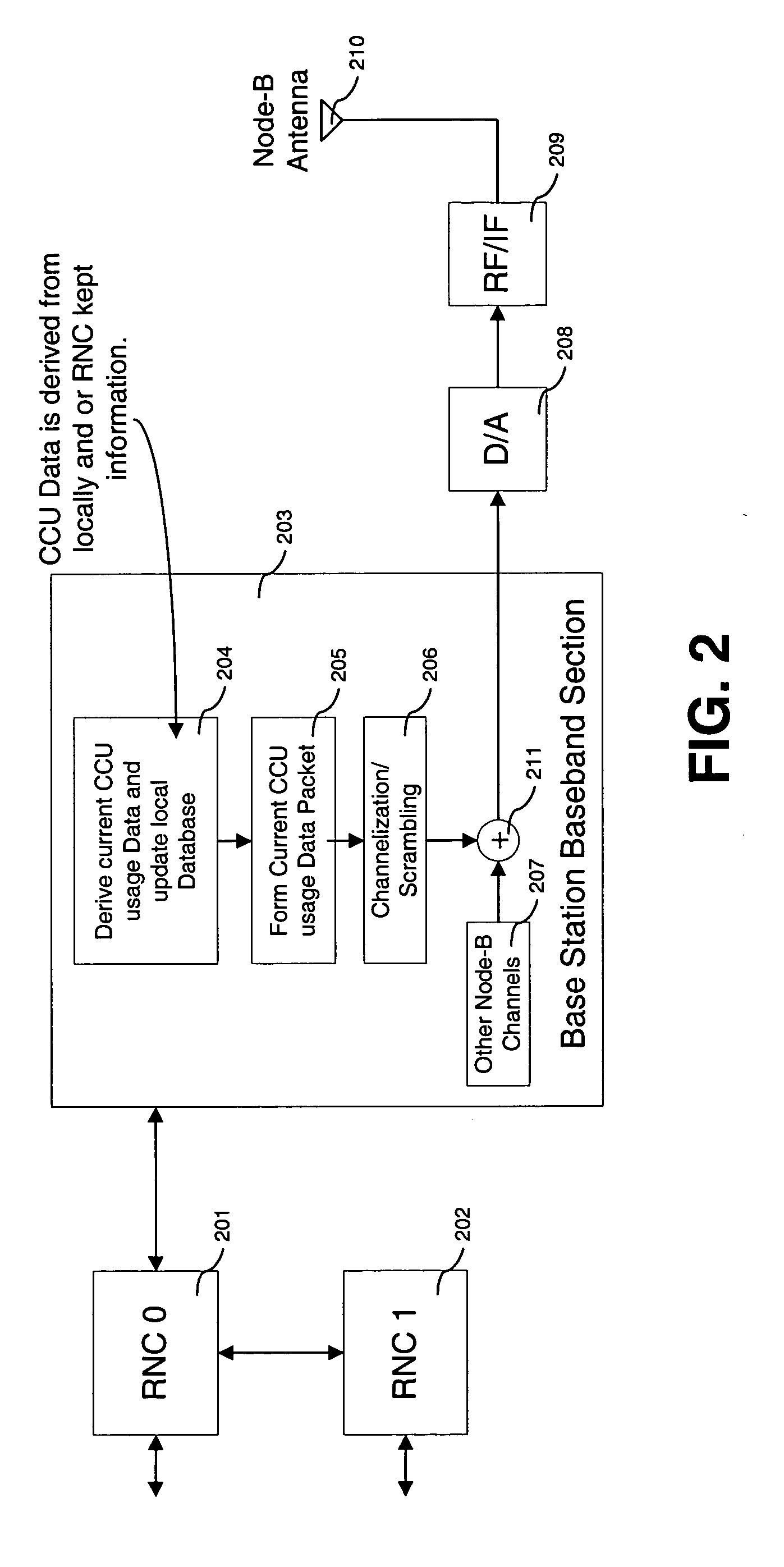Interference cancellation method and apparatus
a technology of interference cancellation and interference, applied in the field of interference cancellation methods, can solve the problems of low system capacity, high error rate, and inability to work well in the receiver structure based on conventional matched filter reception
- Summary
- Abstract
- Description
- Claims
- Application Information
AI Technical Summary
Benefits of technology
Problems solved by technology
Method used
Image
Examples
Embodiment Construction
[0023] A general system functional configuration of the disclosed method is shown in FIG. 1. As shown in FIG. 1 there are two main modules required for the system. One is the Multi-User Detector (MUD) 103 module and the CCU Retrieval Unit (CCURU) 104. The received signals at the antenna input 100 are RF filtered 101, Analog to Digital (A / D) 102 converted and then supplied to the MUD 103 and CCURU 104 modules. The connections shown attached to the MUD 103 and CCURU 104 modules are meant to demonstrate the different possible signal flows required to and between the two modules. Depending on the way the system is operated, a certain flow might not be required. The main different ways the system could be operated are a follows:
[0024] (a) Use only the feed-forward CCURU 104 process, where the CCURU 104 is only connected to the output of the A / D converter 102 and has no connection to the MUD 103 output. This necessitates that the CCURU 104 does not rely on MUD 103 processed output signal...
PUM
 Login to View More
Login to View More Abstract
Description
Claims
Application Information
 Login to View More
Login to View More - R&D
- Intellectual Property
- Life Sciences
- Materials
- Tech Scout
- Unparalleled Data Quality
- Higher Quality Content
- 60% Fewer Hallucinations
Browse by: Latest US Patents, China's latest patents, Technical Efficacy Thesaurus, Application Domain, Technology Topic, Popular Technical Reports.
© 2025 PatSnap. All rights reserved.Legal|Privacy policy|Modern Slavery Act Transparency Statement|Sitemap|About US| Contact US: help@patsnap.com



